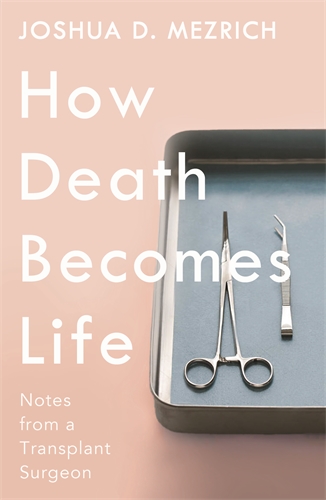
American transplant surgeon Joshua Mezrich is a fun guy with a love of all things British. His disarming humour belies his gruelling work, creating life from loss.
The brother of Bitcoin Billionaires writer Ben Mezrich laughs: “I often do my cases in a British accent – I love British culture. The accent is terrible, but my patients love it.”
The 48-year-old, who is based at the University of Wisconsin, confesses to growing up on a diet of M*A*S*H and dinnertime tales from the ER, told by his engineer dad, who was training to become a doctor.
“He would tell us stories from the hospital,” he recalls. “Ben was disgusted but I loved them.
“That probably sparked my interest in medicine.
“I always wanted to be TV’s Hawkeye Pierce and do meatball surgery, but I didn’t know anything about it. On my first day in surgery at med school, I almost passed out.
“Then they said, ‘Go into the room next door.’ I really wanted to go home, but I went in – and it was a kidney transplant.
“It was the first time I had seen anything like it.
“When they released the clamps on the kidney and it turned pink and urine started to squirt out of the ureter I thought, ‘This is really the most amazing thing I have ever seen.’ I was hooked from that moment.”
He penned How Death Becomes Life to celebrate – in part – the pioneers of transplantation, like Sir Roy Calne and the late Sir Peter Medawar and Sir Michael Woodruff – a professor of Edinburgh University who, in 1960, carried out Britain’s first transplant.

He explains: “A lot of the pioneers are, or were, still alive and I wanted to meet them and understand what it was like to push the limits, to have all these people telling them they were murderers and they were crazy, but they somehow persisted.
“I wanted to understand that while they were still around.
“I also wanted to tell the patients’ stories and to talk about our donors,” he reveals. “In other areas of medicine, we are trying to prevent death, or push it off or maybe get a good death.
“But in transplant we take from death. This line between life and death, where that line should be, and the role transplant played in that, is fascinating.”
His book examines more than a century of medical breakthroughs and takes in the awe-inspiring and heart-breaking stories of donors, and their recipients.
With raw honesty and sensitivity, he looks at his profession’s mistakes and victories. He also tackles tough ethical debates, like should an alcoholic receive a healthy liver and how much risk should a healthy person be permitted to take to save a loved one?
But humour also has a part to play in this intense world.
“We can connect through humour and honesty,” he says. “It’s what makes us human.”
Does he have any other pearls of wisdom to offer?
“Yeah,” he jokes. “We should pay for medicine with bitcoin.”
How Death Becomes Life, Atlantic, £16.99

Enjoy the convenience of having The Sunday Post delivered as a digital ePaper straight to your smartphone, tablet or computer.
Subscribe for only £5.49 a month and enjoy all the benefits of the printed paper as a digital replica.
Subscribe